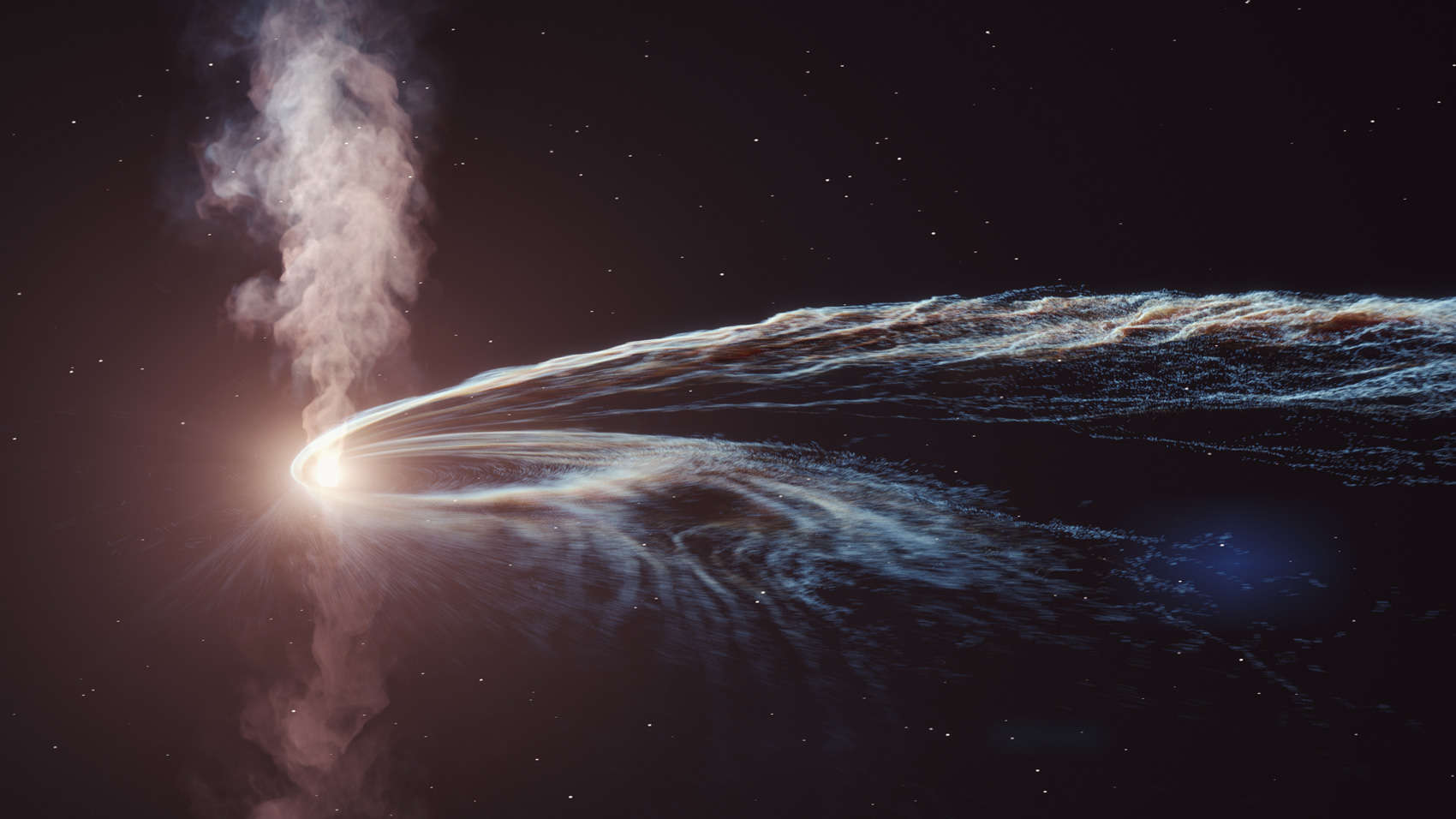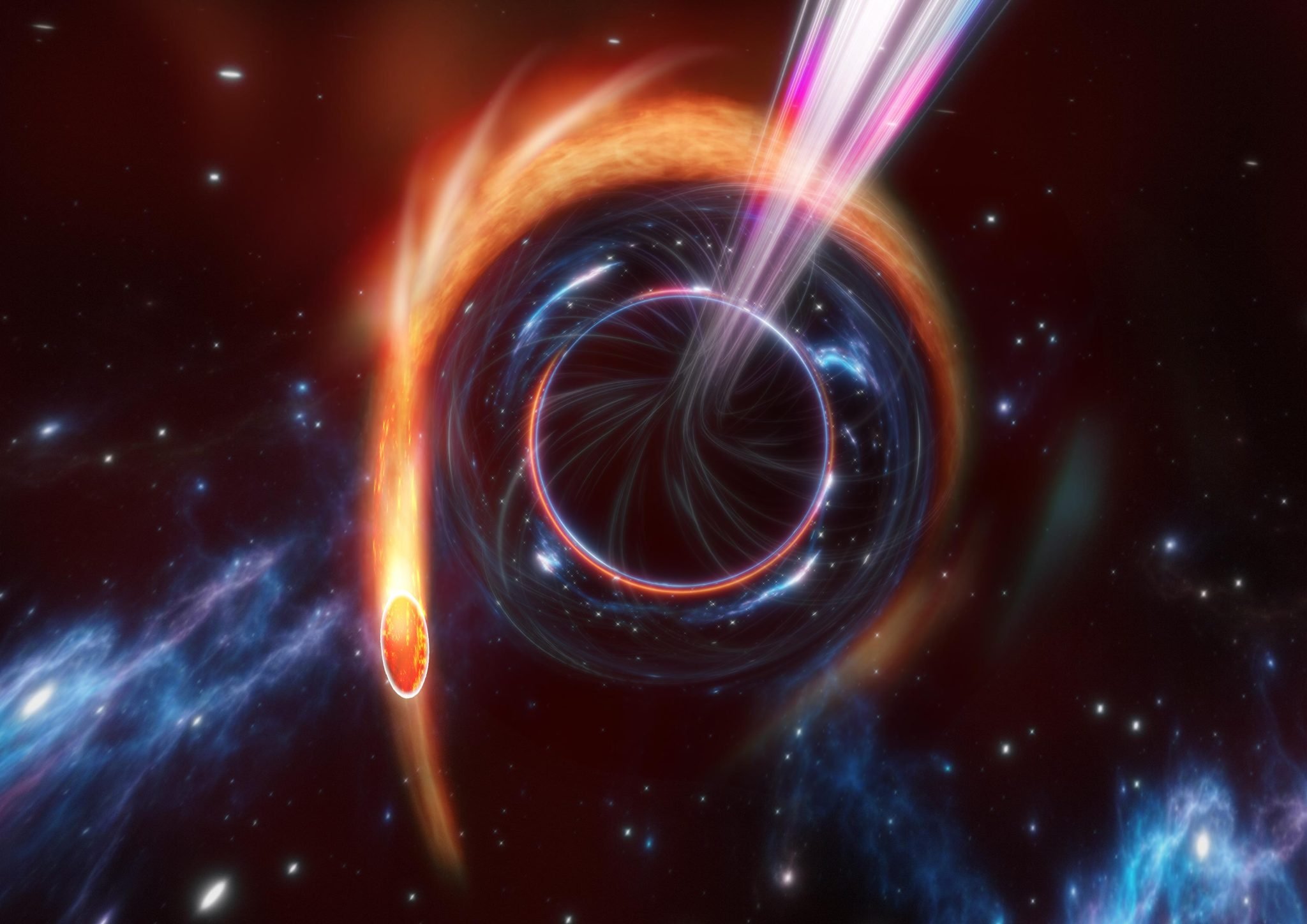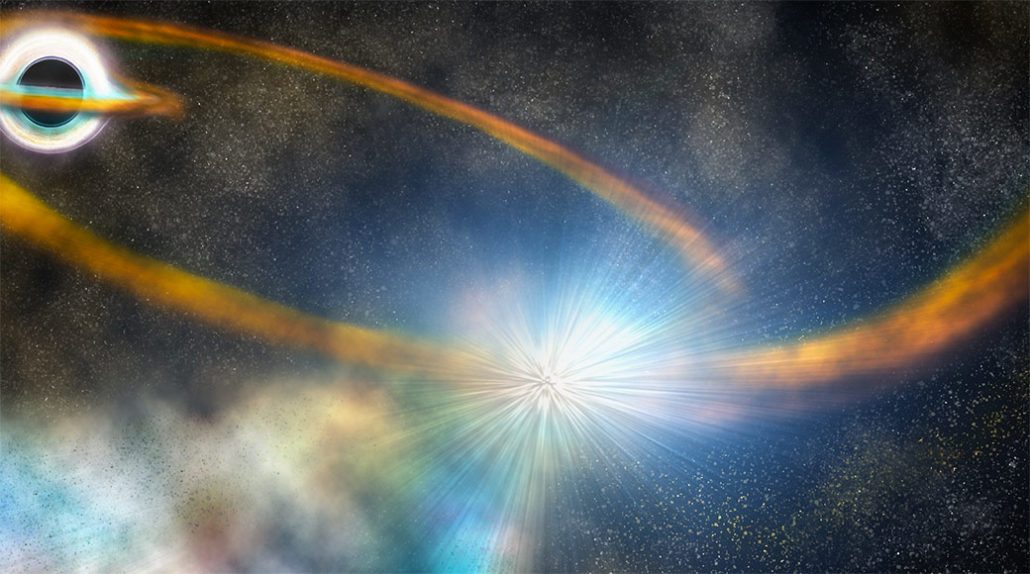.

Artist impression of a tidal disruption event. ESO/M. Kornmesser
Just 215 million light-years away a star was ripped apart by a black hole. This incredible cosmic death is known as a tidal disruption event (TDE) and it is the closest ever recorded. As the star was destroyed, a bright flash of light was released providing unique insights into these phenomena.
This TDE is known as AT2019qi. As reported in the Monthly Notices of the Royal Astronomical Society, a black hole about 1 million times the mass of the Sun pulled apart a star roughly as big as our Sun. When an object gets too close to a black hole it experiences tremendous gravity and more often than not results in death by spaghettification.

Spaghettification might sound like something my Italian grandmas might do, but it is actually the stretching and eventual destruction of stars and bodies around a black hole. The stretched material is heated into a plasma that then swirls around the black hole.
“The idea of a black hole ‘sucking in’ a nearby star sounds like science fiction. But this is exactly what happens in a tidal disruption event,” lead author Matt Nicholl, a Royal Astronomical Society research fellow at the University of Birmingham, said in a statement. “The observations showed that the star had roughly the same mass as our own Sun, and that it lost about half of that to the monster black hole, which is over a million times more massive.”
As strands of material fall into the black hole, they are heated to even higher temperatures releasing bright flares of energy, which can be detected by astronomers. However, a common issue with these observations is how often the flares end up getting obscured by a curtain of dust and debris.
This new study showed the origin of that debris: material from the star itself, as it swirls around the black hole, is pushed out. As it moves away from the black hole, the material cools down becoming an impediment to the observations.

“Because we caught it early, we could actually see the curtain of dust and debris being drawn up as the black hole launched a powerful outflow of material with velocities up to 10 000 km/s,” explained co-author Kate Alexander, NASA Einstein Fellow at Northwestern University. “This unique ‘peek behind the curtain’ provided the first opportunity to pinpoint the origin of the obscuring material and follow in real-time how it engulfs the black hole.”
Given the important lessons learned with this event, the team believes that AT2019qi will be used as a benchmark for all future observations.






